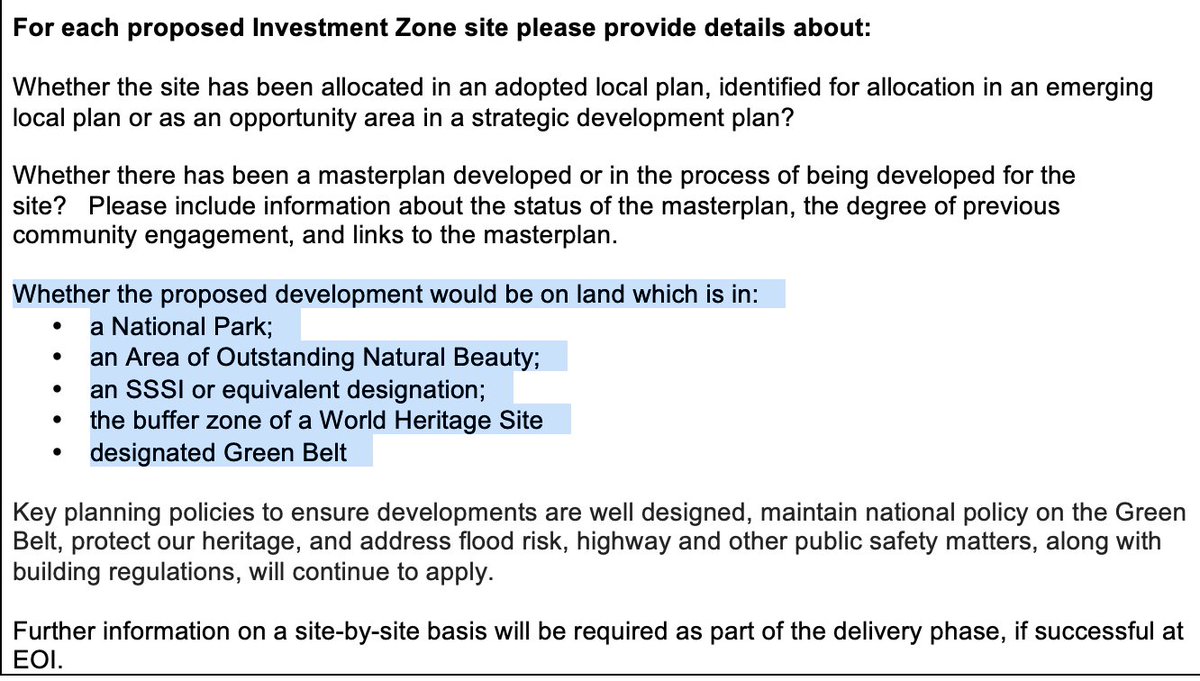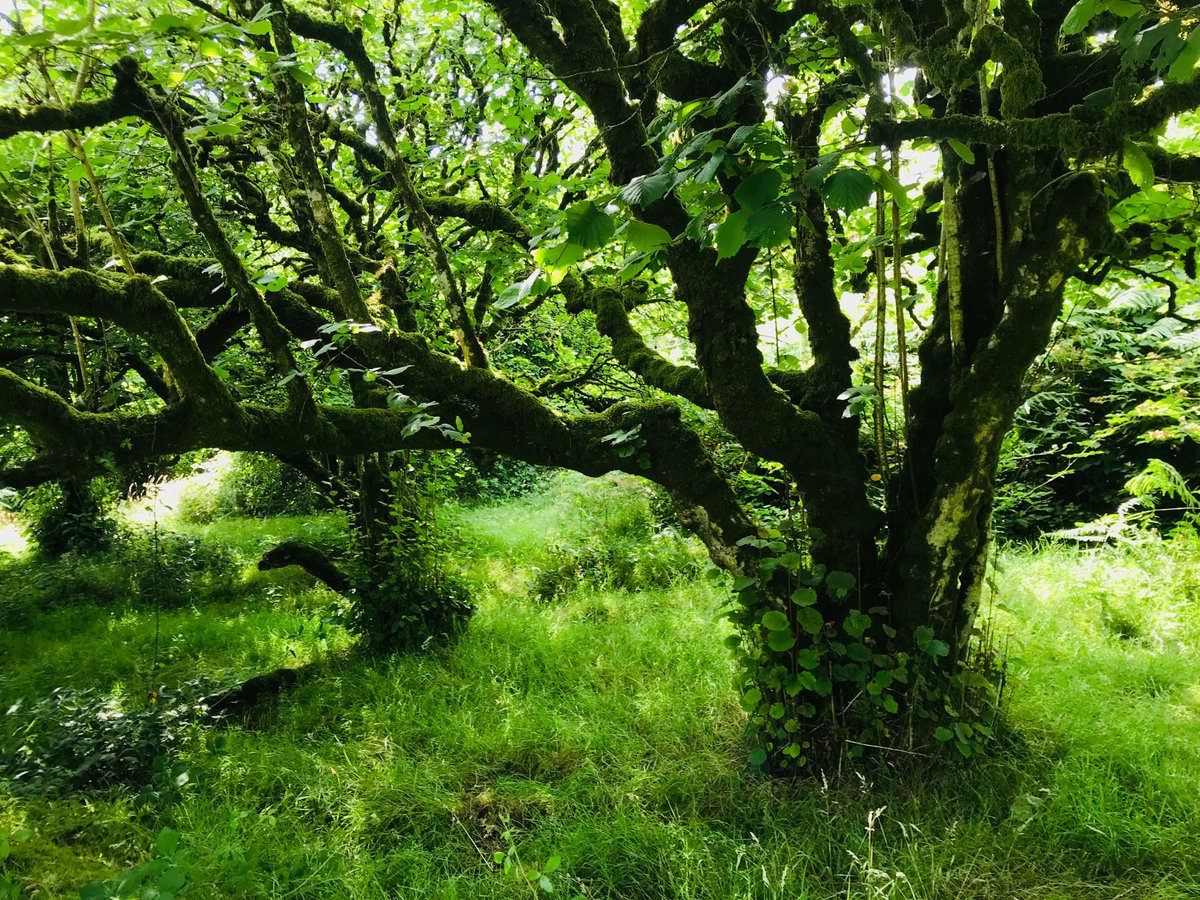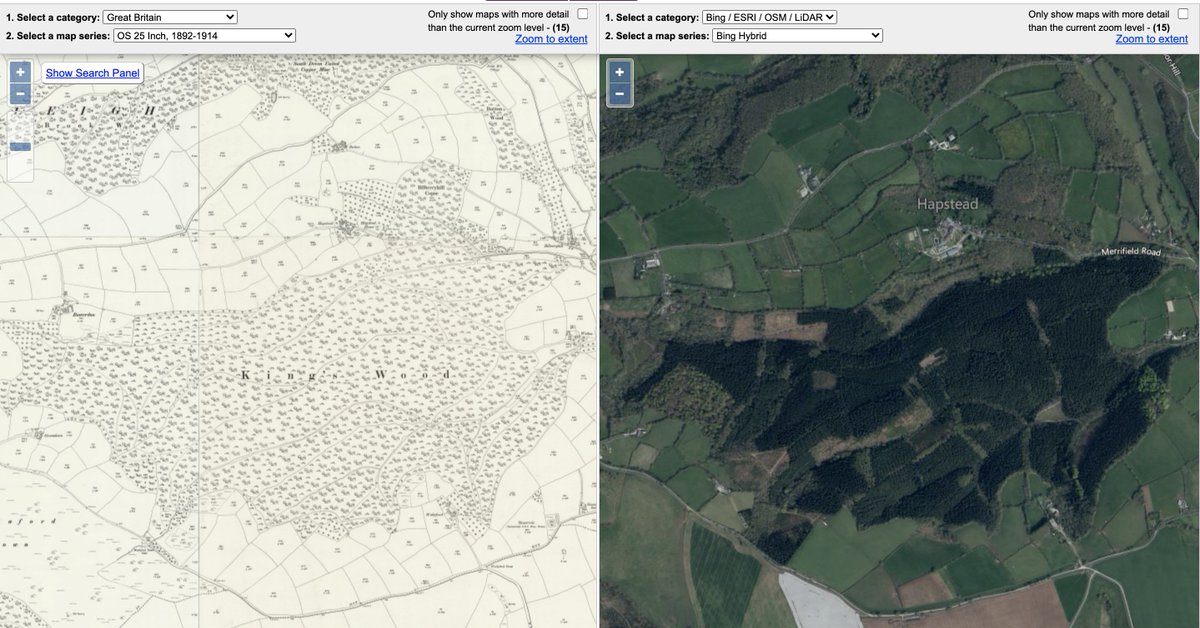
Govt have today published very worrying new guidance on Investment Zones
Ministers appear willing to consider Investment Zones covering SSSIs & National Parks
And guidance includes mention of "a new streamlined planning system"
#AttackOnNature 1/n
gov.uk/government/pub…

Ministers appear willing to consider Investment Zones covering SSSIs & National Parks
And guidance includes mention of "a new streamlined planning system"
#AttackOnNature 1/n
gov.uk/government/pub…


2/n New Expression of Interest form for councils simply asks whether proposed Investment Zones would be on land which is in a National Park, SSSI etc
Nexts para says that various planning policies 'will continue to apply' - but only lists Green Belt & 'heritage', not environment
Nexts para says that various planning policies 'will continue to apply' - but only lists Green Belt & 'heritage', not environment

3/n Elsewhere the EOI form says councils must agree to *mitigate* environmental impacts of the Investment Zone, on or off site.
But there's no mention of *avoiding* environmental impacts in choice of siting - pretty significant if Zone is in an SSSI, SAC, National Park etc!
But there's no mention of *avoiding* environmental impacts in choice of siting - pretty significant if Zone is in an SSSI, SAC, National Park etc!

4/n Meanwhile the Investment Zone guidance is littered with mentions of 'planning liberalisation', 'planning matters impeding delivery' and 'streamlining the planning system'
All sounding rather like Jenrick's abortive planning reforms (which were VERY unpopular)


All sounding rather like Jenrick's abortive planning reforms (which were VERY unpopular)



5/n Last observation for now: everything is being done in a huge hurry.
Local Authorities have *two weeks* to submit Expressions of Interest from today.
This is a recipe for botched proposals, minimal scrutiny and no impact assessments. #AttackOnNature gov.uk/government/pub…
Local Authorities have *two weeks* to submit Expressions of Interest from today.
This is a recipe for botched proposals, minimal scrutiny and no impact assessments. #AttackOnNature gov.uk/government/pub…

6/n PS: Whilst National Parks, AONBs, Green Belts, SSSIs and World Heritage Sites are at least *mentioned* in the guidance doc, notable by their absence are any mention of Natura 2000 sites - SACs and SPAs: designations under the Habitats Regulations the govt wants to scrap...
• • •
Missing some Tweet in this thread? You can try to
force a refresh































